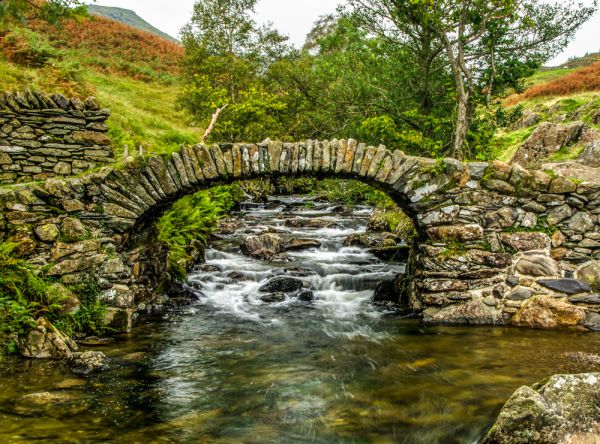Table of Content
- What Customers Say About Rydal Mount
- The poet’s Cumbrian digs are to open to overnight visitors for the first time. Sean Newsom checks in for a literary stay
- The English Lake District As Interpreted In The Poems Of Wordsworth (Paperback)
- Extempore Effusion upon the Death of James Hogg
- I just spent the night in an igloo in Antarctica — here’s how you can, too
She was a crucial if uncredited member of the literary trio who in the late 1790s hammered out Lyrical Ballads, the book that changed English poetry and laid the foundations of the reputations of Wordsworth and Samuel Taylor Coleridge. As you travel around the Lake District, 250 years after he was born, you can literally walk through Wordsworth’s poems, relive his experiences, see what he saw and feel the emotions written into his beautiful poetry. These 5 locations are like stepping back in time, back into his life. Brantwood on Coniston Water was the home of John Ruskin – one of the greatest Victorian critics, poets and artists – for the last years of his life . This lovely house is filled with many fine paintings, beautiful furniture and Ruskin’s personal treasures. Visitors are free to explore the rooms and guides are on hand to answer questions.

With financial prospects, Wordsworth married Mary Hutchinson on October 2, 1802. The settlement helped to support a growing family and also allowed the Wordsworths to continue their generosity to various friends and men of letters, many of whom came to stay at Dove Cottage, sometimes for months on end. The death of the earl of Lonsdale also marked the beginning of a close economic and political relationship between William Wordsworth and Sir William Lowther that would have a significant effect on the poet’s political philosophy in the years to come. In 1794 and 1795 Wordsworth divided his time between London and the Lake Country. In September 1795 William and Dorothy Wordsworth settled at Racedown Lodge in Dorset, where they would live for two years. “A Letter to the Bishop of Llandaff” is remarkable partly because Wordsworth seems to have begun relinquishing its tenets almost as soon as he had composed them.
What Customers Say About Rydal Mount
He attempted to get the play staged in November 1797, but it was rejected by Thomas Harris, the manager of the Covent Garden Theatre, who proclaimed it "impossible that the play should succeed in the representation". The rebuff was not received lightly by Wordsworth and the play was not published until 1842, after substantial revision. This work is licensed under aCreative Commons Attribution-NonCommercial-ShareAlike 4.0 International License. This work by Karen Heenan-Davies, and/or BookTalk and Booker Talk blog is licensed under a Creative Commons Attribution-NonCommercial-NoDerivatives 4.0 International License.
The circumstances of his return and his subsequent behaviour raised doubts as to his declared wish to marry Annette. However, he supported her and his daughter as best he could in later life. The Reign of Terror left Wordsworth thoroughly disillusioned with the French Revolution and the outbreak of armed hostilities between Britain and France prevented him from seeing Annette and his daughter for some years. Wordsworth was taught both the Bible and the Spectator, but little else. It was at the school in Penrith that he met the Hutchinsons, including Mary, who later became his wife. Estimated delivery dates - opens in a new window or tab include seller's handling time, origin ZIP Code, destination ZIP Code and time of acceptance and will depend on shipping service selected and receipt of cleared payment.
The poet’s Cumbrian digs are to open to overnight visitors for the first time. Sean Newsom checks in for a literary stay
Unauthorized use and/or duplication of this material without express and written permission from Karen Heenan-Davies and/or BookTalk and Booker Talk is strictly prohibited. If you want to use posts, excerpts, photos and links, you may contact me first. You would need to give full and clear credit to “Karen Heenan-Davies, Book Talk” with links to the original content. “Dove Cottage” as it’s now called (it didn’t take that name until after Wordsworth’s time) is a solid looking two storey building with lime-washed walls and a slate roof. Inside there are four rooms on each floor, showing many of the original features and items owned by the Wordsworths. The collection of wooden sticks used by Dorothy to clean her teeth were an oddity.
You can take your time exploring the unspoiled lakes, sheep-dotted mountains, and tiny towns at an unhurried pace, with pauses for walks in the countryside or taking photographs. Just outside the pretty village of Grasmere is Dove Cottage, where Wordsworth lived for eight years and produced many of his greatest works, including I Wandered Lonely as a Cloud. Dorothy Wordsworth, William’s sister, also wrote her Grasmere Journals here, which documented daily life in the Wordsworth's Lake District home. For a multitude of causes unknown to former times are now acting with combined force to blunt the discriminating powers of the mind, and unfitting it for all voluntary exertion to reduce it to a state of almost savage torpor. To this tendency of life and manners the literature of the atrical exhibitions of the country have conformed themselves.
The English Lake District As Interpreted In The Poems Of Wordsworth (Paperback)
While he wrote, Dorothy looked after the house and tended the lovely garden. She kept a diary that contains a detailed account of everyday life at Dove Cottage. And it was while walking with Dorothy in the countryside nearby that William spotted the field of daffodils, the inspiration for his most famous poem, I Wandered Lonely as a Cloud . There are numerous sites of significance in the Lake District that have links to William Wordsworth. His childhood home in Cockermouth, Wordsworth House, is open to the public during the summer months and has been restored to reflect life in 18th century England.
Admittedly, the family’s link with Rydal Mount was broken for more than a century after Wordsworth’s death — he was always the tenant here, never the owner. But when it was put on the market in 1969 it was snapped up by his great-great-granddaughter, Andrew’s granny. Scattered across the country, among her relations, was a load of heirlooms. Portraits, books, Wordsworth’s favourite cutlass chair and that couch. They were all returned in preparation for the opening of Rydal Mount to day visitors in 1970.
In the village of Coniston, close to Brantwood, is the Ruskin Museum, which celebrates the literary and cultural history of the Coniston area. Wordsworth spent the vast majority of his life living the Lake District, and is generally considered the area’s most famous son. Many of his poems, including “I Wandered Lonely As A Cloud”, were inspired by the sights he found during his many hikes through the area. The Lake District as a tourist destination is a relatively modern phenomena and in part came about thanks to William Wordsworth’s publication “Guide To The Lakes” in 1810 that encouraged large numbers of Victorian tourists to visit the area.

Then the Lake District awaits, in all its weather-beaten, lichen-encrusted glory. Sometime in the 1960s the wall between the library and the adjacent drawing room was knocked down to create a big, open-plan space, bookended by cheerful fires and laid with colourful rugs. Sitting here, it’s not hard to see why the Wordsworths were so relieved to move in, or stayed so long. They had endured a horrific year in which two of their children, Thomas and Catherine, died. Well-drained, south-facing and relatively spacious, it was a place where they could recover, rebuild their lives and prosper. Very time I reach for a book at Rydal Mount, I feel I should ask William Wordsworth’s permission.
When Ashley M. Jones first heard the poetry of Jacqueline Allen Trimble, Jones says she heard something “Southern, unapologetically Black, fierce, sweet, and strong.” This week, Jones and Trimble talk... Poems and prose about conflict, armed conflict, and poetry's role in shaping perceptions and outcomes of war. Classic and contemporary poems to celebrate the advent of spring. As I take a copy of his complete works back to my chair, they all seem to be gathering round. He’s back from the far terrace in the garden, where he would pace the path, composing verse. There’s Dora, impervious to the advances of an infuriated William Ayling; there will be trouble to come from that.
"He looks like a man that one must not speak to unless one has some sensible thing to say. However he does occasionally converse cheerfully & well; and when one knows how benevolent & excellent he is, it disposes one to be very much pleased with him." William Wordsworth (7 April 1770 – 23 April 1850) was an English Romantic poet who, with Samuel Taylor Coleridge, helped to launch the Romantic Age in English literature with their joint publication Lyrical Ballads . Will usually ship within 3 business days of receiving cleared payment. Please allow additional time if international delivery is subject to customs processing. Rydal Mount, where William lived from 1813 until his death in 1850.
In the third book of The Prelude Wordsworth recorded his reactions to life at Cambridge and his changing attitude toward his studies. One of Wordsworth’s most beloved spots, Grasmere is the setting of his cherished home Dove Cottage. A sanctuary for William and his sister Dorothy from 1799 to 1808, the cottage has since become a literary mecca for fans of the poet, offering the chance to step back in time to when Wordsworth penned some of his best-loved lines. Having undergone a £6.2m renovation, new additions include authentically restored rooms, a re-creation of the ‘half-wild’ garden, new learning spaces and listening spots.
Despite the death of many contemporaries, the popularity of his poetry ensured a steady stream of young friends and admirers to replace those he lost. Wordsworth made his debut as a writer in 1787 when he published a sonnet in The European Magazine. He returned to Hawkshead for the first two summers of his time at Cambridge, and often spent later holidays on walking tours, visiting places famous for the beauty of their landscape. In 1790 he went on a walking tour of Europe, during which he toured the Alps extensively, and visited nearby areas of France, Switzerland, and Italy.
Having exhausted his money, he left France in early December 1792 before Annette Vallon gave birth to his child Caroline. Back in England, the young radical cast about for a suitable career. As a fervent democrat, he had serious reservations about “vegetating in a paltry curacy,” though he had written to his friend William Matthews in May 1792 that he intended to be ordained the following winter or spring. Perhaps this plan was why he was reading sermons early in 1793, when he came across a sermon by Richard Watson, Bishop of Llandaff, on “the Wisdom and Goodness of God” in making both rich and poor, with an appendix denouncing the French Revolution.


No comments:
Post a Comment